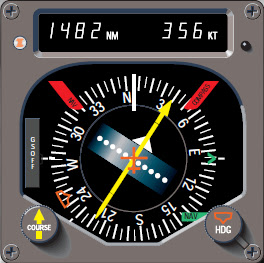ZeroPapaGolf
Line Up and Wait
- Joined
- Jul 2, 2011
- Messages
- 647
- Display Name
Display name:
ZeroPapaGolf
Ditto, but I'm pretty sure it is being driven by the GPS when it slews the course pointer. Once I switch the Sandel input to the NAV radio part of the 480, I'm pretty sure no further slewing happens.
I have to admit, however, that I've been grounded for over a year and that's entirely from a memory that's becoming more and more distant. I'm going to need a nice thorough BFR (and IPC) when I get my Basic Med sign off in a few months.
Yes, it has to be getting that information from the GPS. There's no way for the Sandel to know what the course is by itself, it would have to have it's own database and updates to do that. Sections 3-10 and 6-1 of the 3308's pilot guide explain this clearly. It will NOT auto-slew for anything but GPS.

